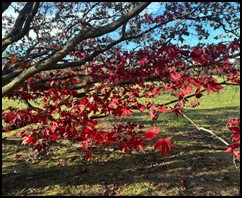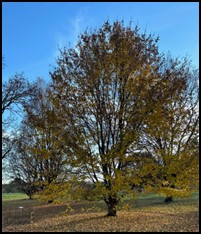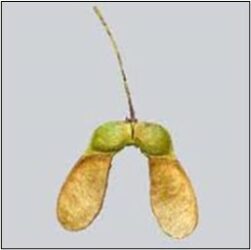By Ken Johnson
Bernheim’s nationally famed arboretum is a beautiful, thriving mosaic of plants of all types. It is a special treat to take a slow drive or walk around this wonderful area and let the glories of nature engulf us. I would urge all to occasionally take a slower and more deliberate look at some of the elements that make up that mosaic. The Arboretum’s Maple Collection is a true gem, dating back to the 1940s, making it one of the oldest elements of the Arboretum.

Bernheim has nearly 100 species or horticultural varieties of maples and they can be found in many areas of the Arboretum. One area is set aside to feature these amazing trees. The Maple Collection is located near the front entrance, on the right as you enter. A convenient way to visit the area is to park in the lot near the Garden Pavilion and take a pleasant stroll to these trees.

Maples are among the most common and recognizable trees in America. They are also abundant throughout the forests of much of the Northern Hemisphere. They are planted in our yards, parks, in landscaping around public buildings, and along our roadways. Several species of maples are ubiquitous in the forests of Kentucky including red, (Acer rubrum), black (Acer nigrum), sugar (Acer saccharum), silver (Acer saccharinum), and boxelder (Acer negundo) maples. It is no surprise that the Bernheim Maple Collection was one of the earliest tree collections to be established in the Arboretum.
Our native maples were here long before there was a Bernheim Forest. However, because of the extensive harvesting of the trees in this area to provide fuel for the salt and iron industries, they were not present in great numbers. Not long before Isaac W. Bernheim bought the land, a forestry company sent a representative to evaluate the potential for further logging. He estimated that on the 12,500 acres (the approximate size of the initial purchase) there were fewer than 200 mature maple trees.
Maple trees in our forests don’t live in isolation. They are an integral part of the environment. Birds nest in them, bats find resting places in their cavities, and the shaggy bark is found in some maples. Maples are the host plant for numerous species of butterflies and moths. Along with wind pollination, several species of bees pollinate the trees. Maples also feed many birds, insects, and small mammals with the seeds contained inside their samaras, often called helicopters, whirligigs, or wingnuts.

Maples provide us with lumber that has a great many important uses. Many maple species are commonly harvested for wood used in construction and furniture making. Sugar maples and black maples are classified as hard maples and their wood is used for baseball bats, bowling lanes (and bowling pins), dance floors, butcher blocks, countertops, and other applications needing a dense, stable wood. Maples are also known for a variety of beautifully figured woods including curly, bird’s eye, spalted, ambrosia, quilted, and tiger, maple. These interesting patterns are found in a small percentage of several maple species. The reason for the unusual figuration is not fully understood but a great many theories exist. This special wood is sought after by makers of fine furniture, and luthiers looking for distinctive material for stringed instruments, wood turners, and other artisans.

For many of us, our most immediate contact with the value of our maples might be found on our breakfast tables. Maple syrup, maple cream, and maple sugar are all delicious ingredients or condiments. Maples grow throughout the Northern Hemisphere including Europe and Asia but the harvesting of maple sap is almost exclusively confined to North America. Canada produces the majority of the world’s syrup, the northeastern and upper midwest states of Vermont, New York, Maine, Wisconsin, New Hampshire, and Michigan, and Pennsylvania being the leading U.S. producers. The colonial Americans learned of the process of making maple sugar from Native American people of the region including the Algonquin people, the Iroquois, the Ojibwe, and others. These Native Americans would usually boil the sap down to the point that maple sugar was produced. The sugar was easier to store and transport than syrup.

It takes anywhere from twenty to one hundred gallons of maple sap to make a gallon of syrup. Reducing it further and whipping the thickened product results in maple butter (which contains only the product of the maple tree, not butter). Further reduction produces maple sugar. All these delicious products contain no additional ingredients – no artificial colors, preservatives, flavor enhancers, etc. While Kentucky is a relatively minor producer of maple syrup, there are many hobby operations and several commercial producers. The gift shop in the Bernheim Visitor Center carries syrup produced by South 4 Farms located in Allen County, Kentucky. Several bourbon distillers also offer maple syrup that has been aged in bourbon barrels.
Have a good breakfast, maybe a stack of pancakes with some delicious, pure maple syrup. Take a trip to visit this amazing arboretum that was given to all of us to enjoy and appreciate. The maples and the rest of this beautiful arboretum and forest will welcome you.


